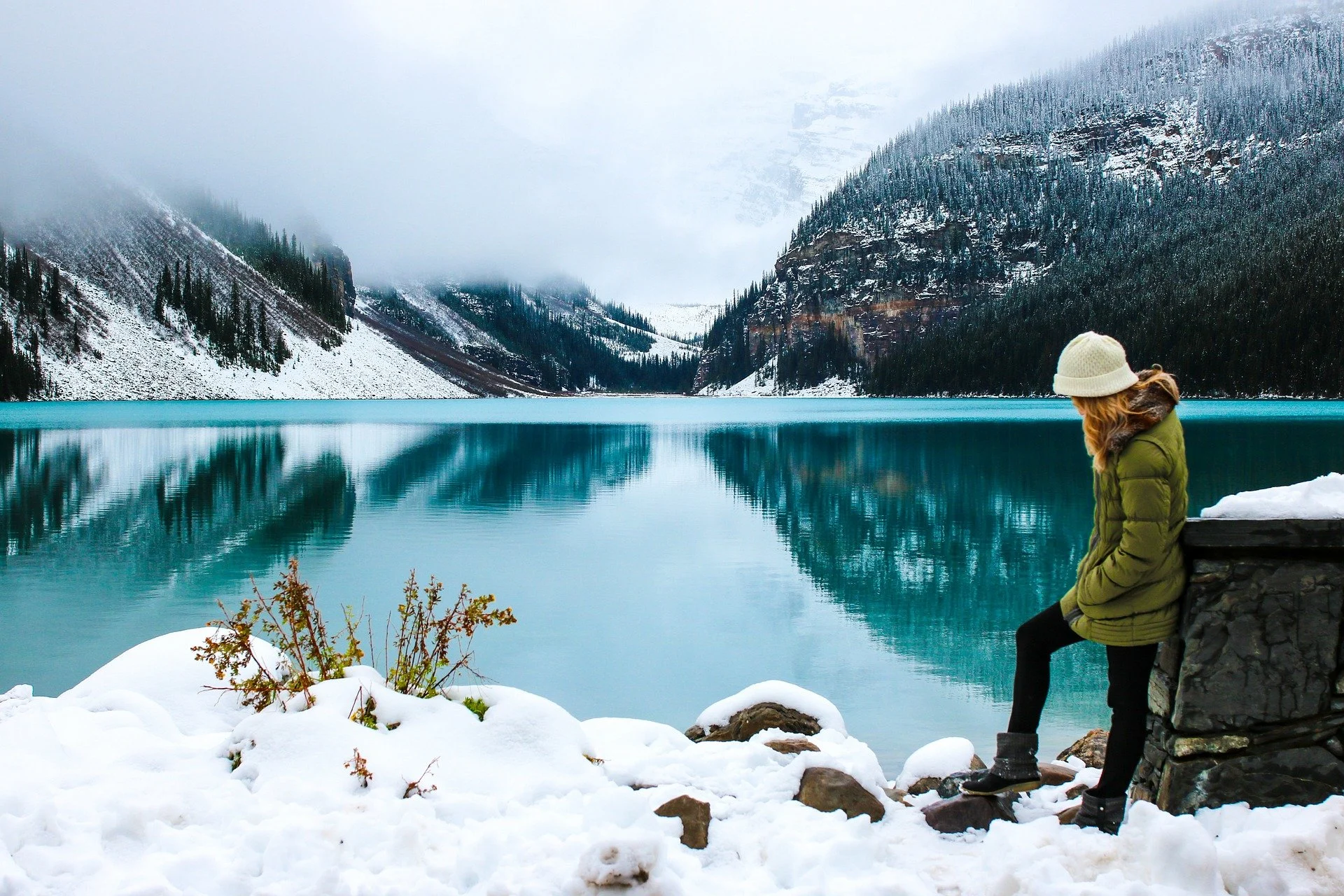
Climate change is now the No. 1 threat to World Heritage sites, report finds
World heritage sites are considered to be the most significant protected areas on Earth, but climate change is having increasingly severe impacts on these natural areas.
A report from the International Union for Conservation of Nature (IUCN) found that climate change became the biggest threat to natural World Heritage sites in 2020 and more sites have deteriorated than have improved since the previous assessment in 2017.
World Heritage sites are designated by UNESCO as places with “outstanding universal value to humanity” and should be “protected for future generations to appreciate and enjoy.” The Galapagos Islands, Yellowstone National Park, and the Canadian Rocky Mountain Parks are just a few of the 252 world heritage sites scattered across the world.
The IUCN report warns that 83 of these sites are being damaged by climate change impacts such as increasingly frequent and severe fires, coral bleaching, severe weather events, and droughts. Several sites experienced two or more of these impacts in one period of time, which resulted in a deteriorated conservation outlook. Australia’s Great Barrier Reef and Mexico’s Islands and Protected Areas of the Gulf of California entered the critical category after suffering from a combination of climate change impacts.
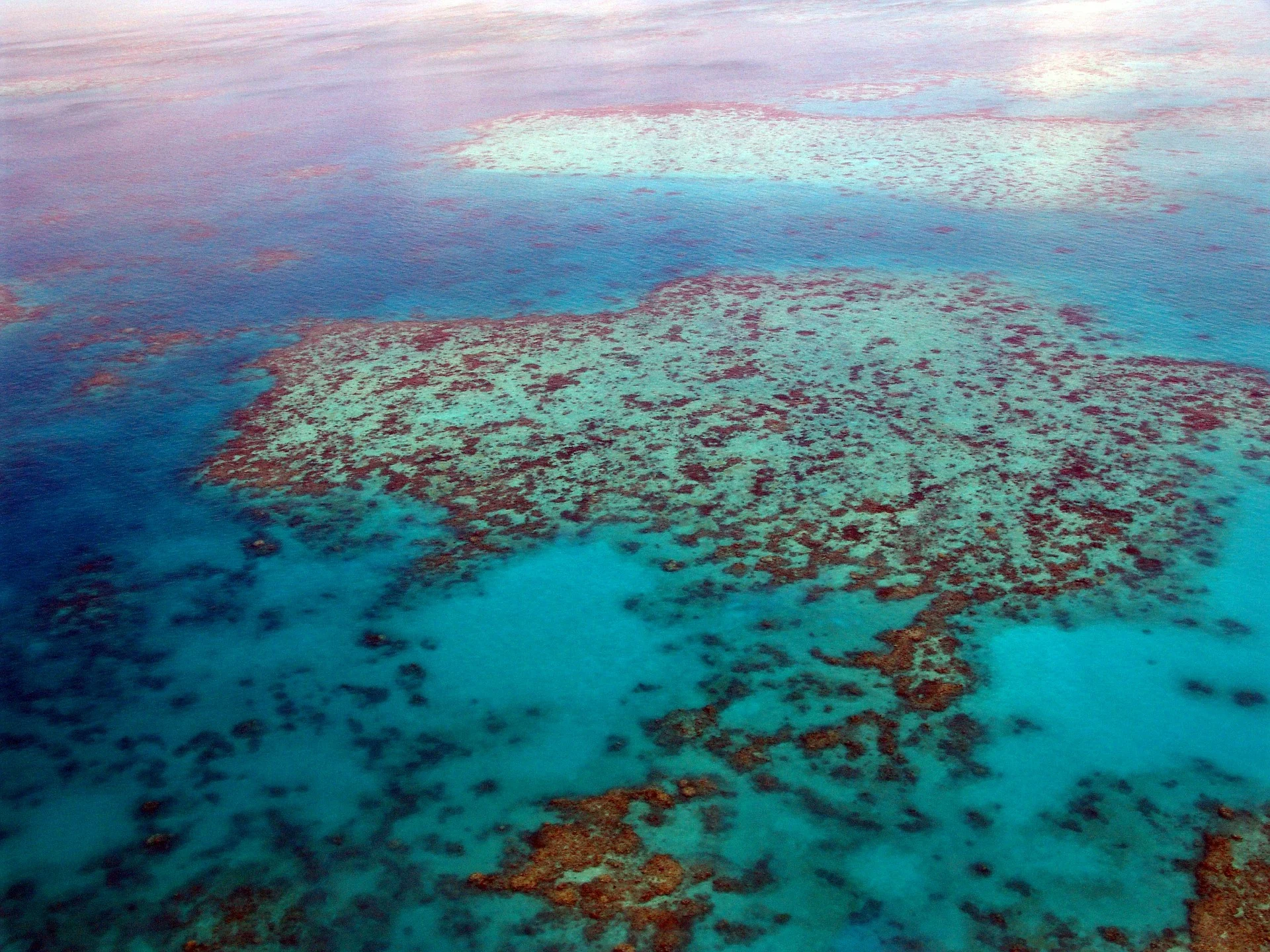
The Great Barrier Reef in Australia. Credit: Gaby Stein via Pixabay
The report notes that the top three global threats to world heritage sites, climate change, invasive alien species, and tourism, are not always the top three threats that are the most prominent in a specific site. Livestock grazing is now in the top three most common threats in South America whereas solid waste (e.g. plastic pollution) is amongst the most prevalent threats in the Arab States, which demonstrates how each region requires unique approaches to best address their varying impacts.
Impacts from the COVID-19 pandemic were apparent in the report. Some assessments found that several sites experienced positive effects from the pandemic, most notably decreased tourism having less pressure on the delicate ecosystems. However, this also resulted in plummeting revenue and made it difficult for staff to control and monitor illegal activities such as wildlife poaching.
For 63 per cent of all sites, the conservation outlook is either “good” (47 sites) or “good with some concerns (112 sites), which the report says demonstrates the effectiveness of conservation efforts. However, only 50 per cent of the sites have effective or highly effective protection and overall management, which the report says indicates the need for greater commitment to providing adequate resources to protect “the world's most precious and irreplaceable places — never more important than in a climate of increasing threats.”
WORLD HERITAGE SITES IN CANADA
Of the World Heritage sites in Canada, ten are natural and one is a combination of natural and cultural. Most of the sites have a conservation outlook that is “good” or “good with some concerns.” See below for a look at some of the spectacular World Heritage sites in Canada.
Nahanni National Park is located in the N.W.T. and its sprawling wilderness is visited by less than 100 people a year who arrive by canoe or floatplane. Enormous waterfalls, deep canyons, a limestone cave system are visited by a variety of wildlife including mountain goats, grizzly bears, and caribou. There are very few permanent inhabitants and the IUCN says that this site’s conservation outlook is “good with some concerns.”
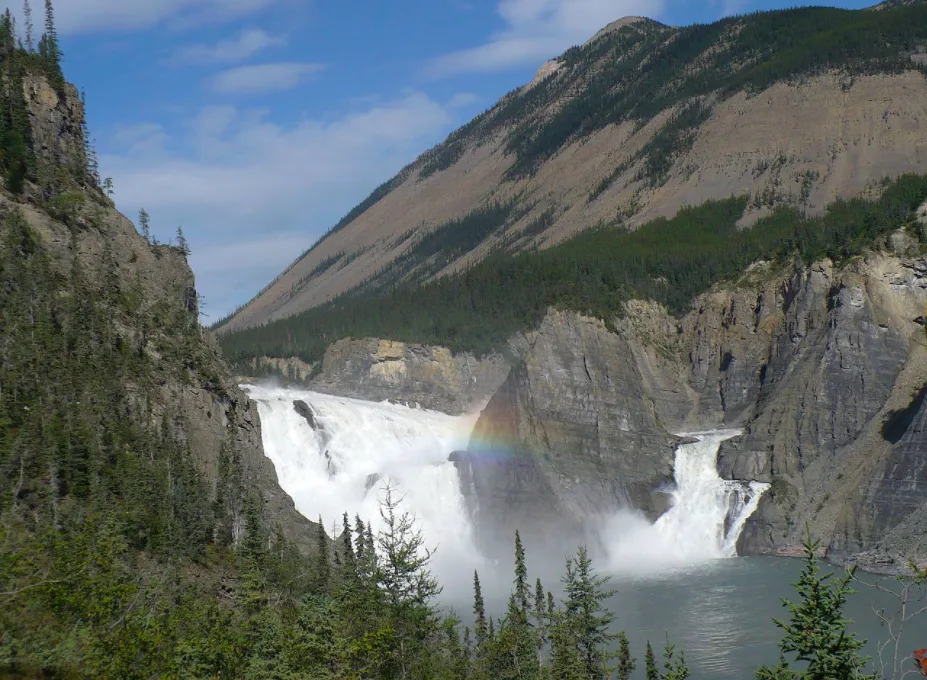
Virginia Falls (Nailicho), Nahanni National Park Reserve, Northwest Territories. Credit: Paul Gierszewski (CC0 1.0)
Climate change and impacts from nearby mining, tailing ponds, and exploration activities are the main hazards that could affect the park. “Overall protection and management of the site is mostly effective, however, improving relationships with Indigenous rights-holders not involved in cooperative management must be a priority,” the IUCN states.
Canadian Rocky Mountain Parks feature mountain peaks, glaciers, the Burgess Shale fossil beds, which are seeing a rapid increase in tourism rates and infrastructure. The IUCN says that this site’s outlook assessment is “good with some concerns'' due to uncertainty regarding staffing and pressures from tourism and development activities. The rapidly receding glaciers are expected to shrink by 95 per cent in 2100, which demonstrates how climate change is putting the scenic values in these parks at risk.
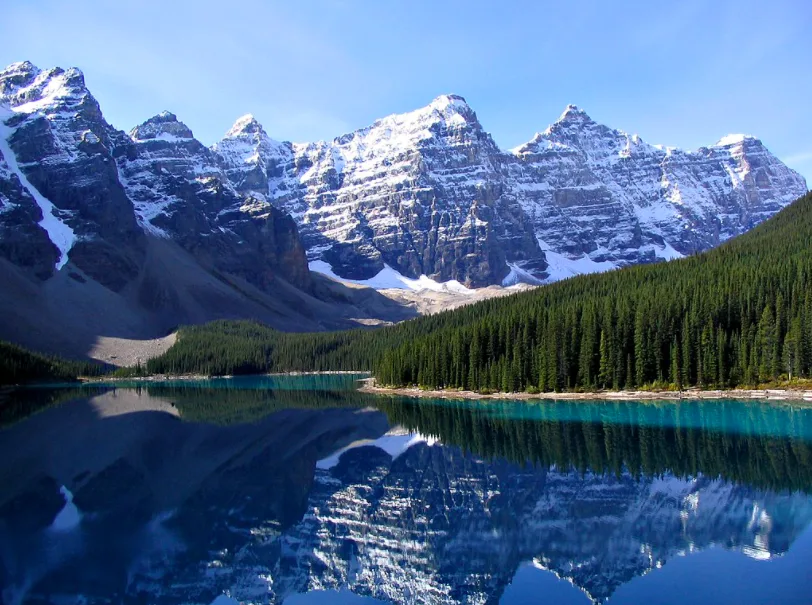
Valley of the Ten Peaks and Moraine Lake, Banff National Park. Credit: Gorgo/ Wikimedia Commons. (CC0 1.0)
Dinosaur Provincial Park is located in Alberta's badlands and has yielded fossil discoveries that date back roughly 75 million years ago. Invasive plant species, illegal removal of fossils, and gas exploration and development near the site are currently the park’s main threats. The site’s outlook assessment is “good” due to the protection and management programs, which were found to be highly effective.
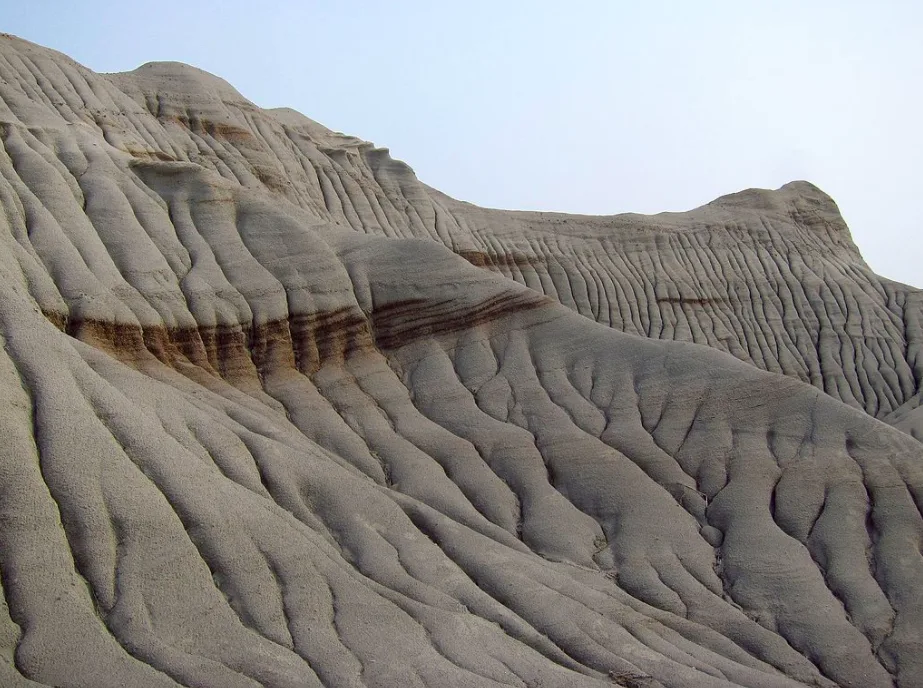
Dinosaur Provincial Park in Alberta. Credit: Natulive Canada/ Wikimedia Commons. (CC BY-SA 4.0)
Waterton-Glacier International Peace Park was formed in 1932 when parks in Alberta and Montana were officially joined together. The IUCN says that this park is a positive example of cooperation across national borders, but notes that rapid glacier retreat, invasive species, and loss of habitat activity make the site’s outlook assessment “good with some concerns.” The IUCN says that management systems of various levels will be needed to manage existing and potential threats to the park.
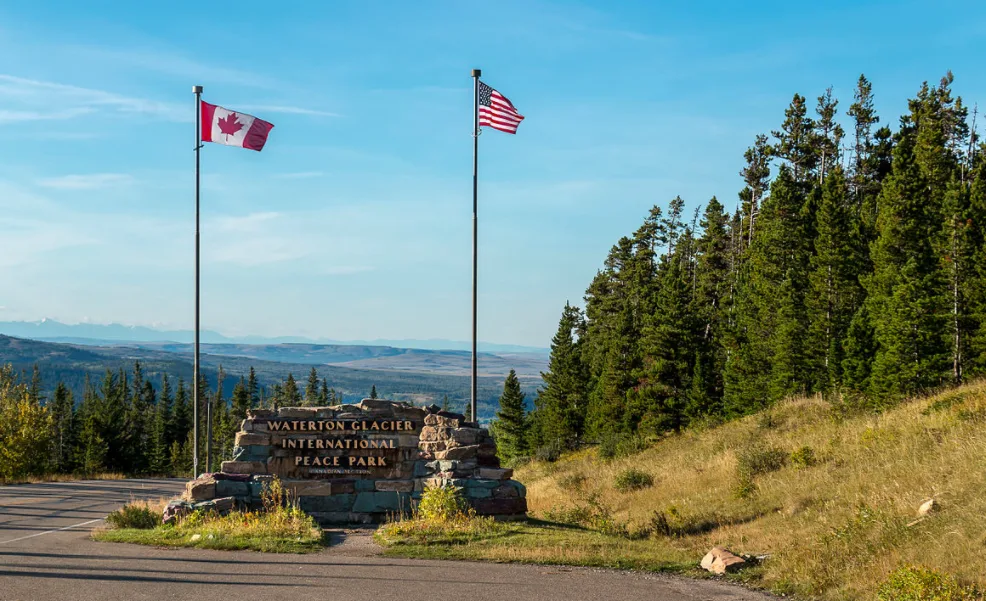
The park's sign at the Chief Mountain border crossing. Credit: Martin Kraft/ Wikimedia Commons. (CC BY-SA 3.0)
Pimachiowin Aki is a natural and cultural World Heritage site that sprawls over the Manitoba-Ontario border and features the largest stretch of untouched boreal wilderness left on Earth. Anishinaabeg have lived in this region for over 7,000 years and use ancient conservation practices to care for the millions of trees, hundreds of lakes, rivers, and wetlands.
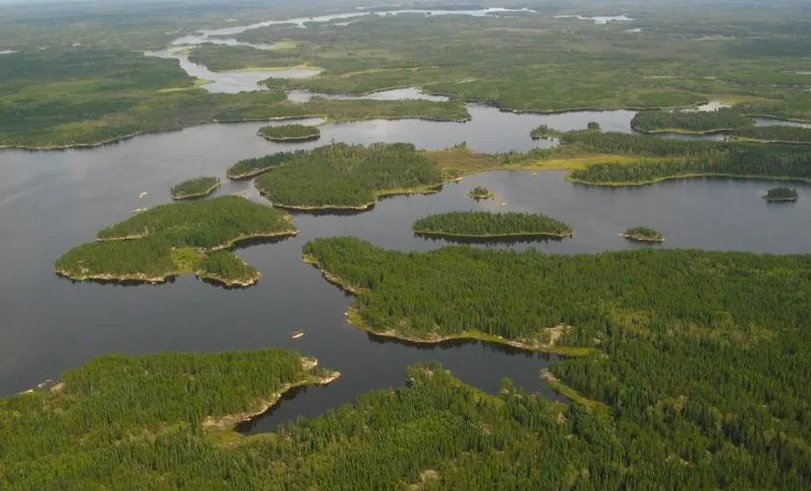
The natural values of Pimachiowin Aki, which means “the Land that Gives Life”, are shaped by a deeply interconnected relationship between people and land. Credit: IUCN/ Bastian Bertzky
This intact landscape that maintains ecological processes and integrity earned this site a “good” conservation outlook. Structural damages from wildfires are the biggest threat to this site and the IUCN says that a combination of customary, legislative, and institutional measures will be needed to help protect the region.
The Kluane/ Wrangell-St Elias/ Glacier Bay/ Tatshenshini-Alsek World Heritage Site includes glaciers and high peaks in the Yukon and British Columbia. It is home to the largest non-polar ice field in the world and has a conservation outlook of “good with some concerns.”
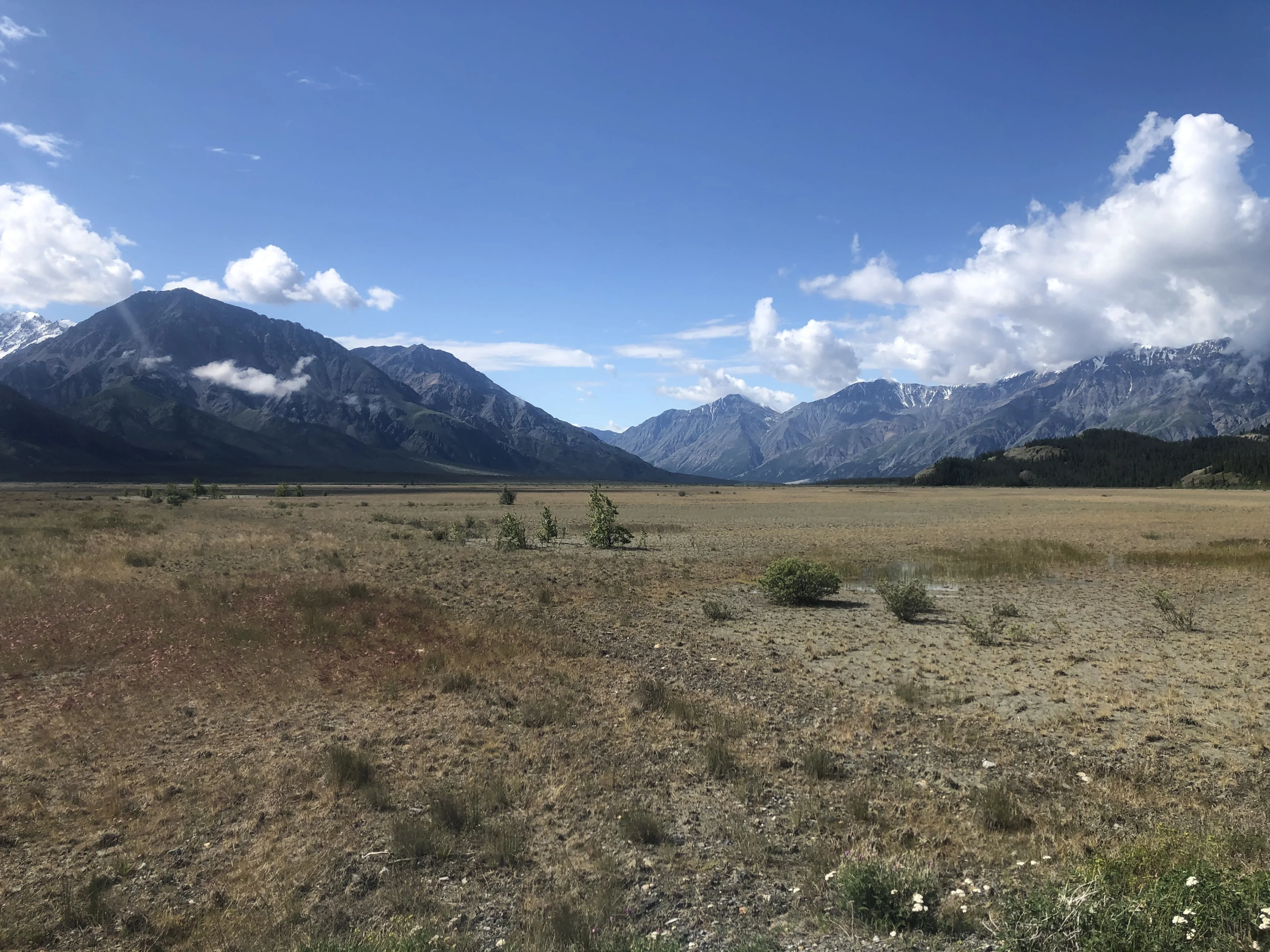
Kluane National Park and Reserve. Credit: Mia Gordon
Climate change is the most significant threat and is causing melting permafrost, retreating glaciers, and the growth of more vegetation. The IUCN says that the current protection and management plans are highly effective but will need to address impacts from climate change as atmospheric temperatures rise.
Wood Buffalo National Park, located in northeastern Alberta and the southern N.W.T, is the most at-risk site in Canada and is the only site with a conservation outlook of “significant concern.” This park is home to North America's largest population of wild bison and is the natural nesting place of the whooping crane.
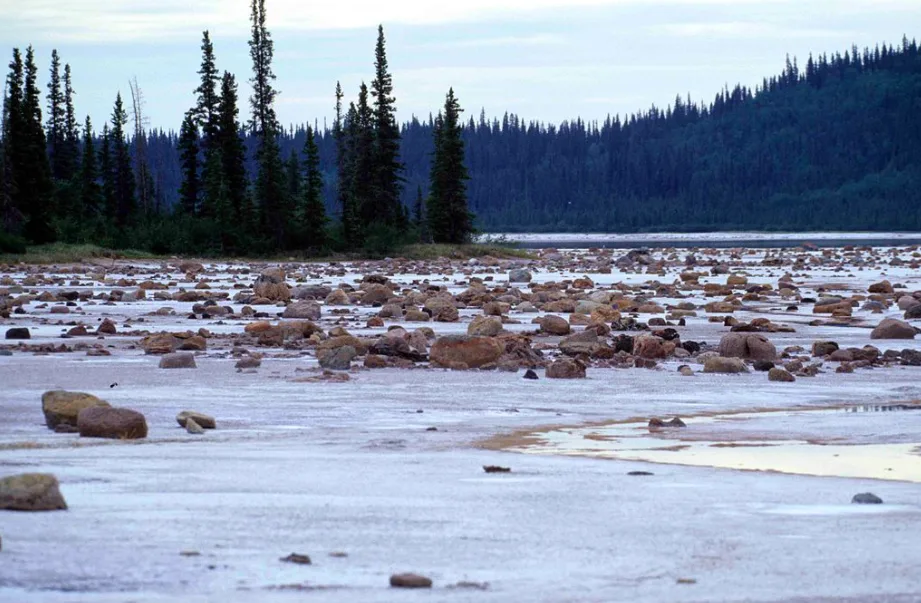
Gros Beak Lake in Wood Buffalo National Park. Credit: Ansgar Walk/ Wikimedia Commons. (CC BY-SA 2.5)
Climate change and industrial development along both the Peace and Athabasca Rivers are presenting significant challenges to the Peace-Athabasca Delta, which is the largest inland delta on Earth. The IUCN emphasizes that “neither originate in the park nor can they be solved there” and aside from climate change, upstream industrial development is one of the biggest threats to the park.
Miguasha National Park is located in southeastern Quebec along the Gaspé peninsula. The IUCN says that it is “considered the world's most outstanding illustration of the Devonian Period” since fish fossils that were discovered here date back 370 million years ago. The IUCN says “the current state of the geological value and attributes of the Miguasha site is good and the trend is stable.”

Outcrop of the Devonian beds that are rich in fossils. Credit: Neumeier/ Wikimedia Commons. (CC BY-SA 3.0)
Joggins Fossil Cliffs is a palaeontological site situated along the coast of Nova Scotia where fossils from 354 million years ago have been found. In addition to the extensive amount of fossil discoveries, this site is a particularly unique environment because it consists of three ecosystems: Estuarine bay, floodplain rainforest, and fire prone forested alluvial plain with freshwater pools.
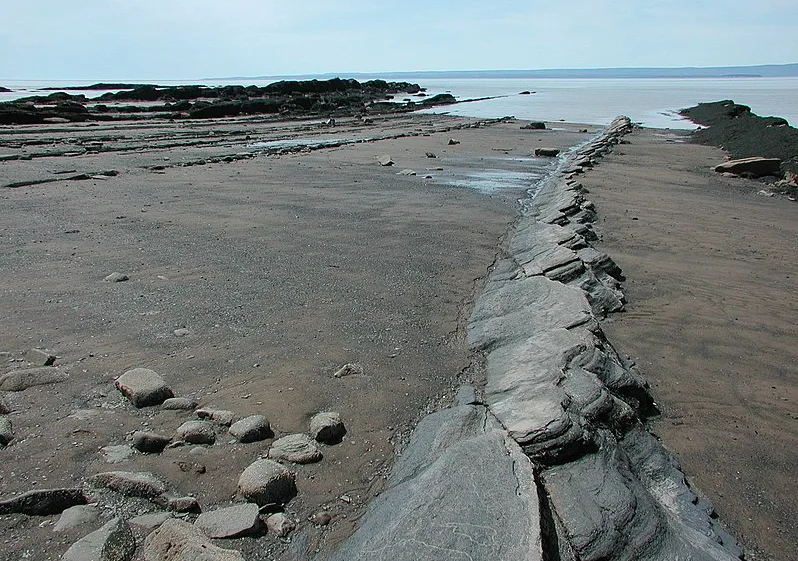
Exposed stratification reveals fossils from an early Carboniferous Period rainforest. Credit: Cornellier/Wikimedia Commons. (CC BY-SA 4.0)
The site’s assessment outlook is “good” based on the IUCN's findings that threats are low and there is a “highly effective and creative” management system that incorporates community support for conservation.
Gros Morne National Park is located on Newfoundland’s west coast and is the remnants of a mountain range that formed 1.2 billion years ago. The most recent ice age, roughly 25,000 to 10,000 years ago, shaped the landscape and created fjords, glacial valleys, and pristine lakes where hundreds of different species live.
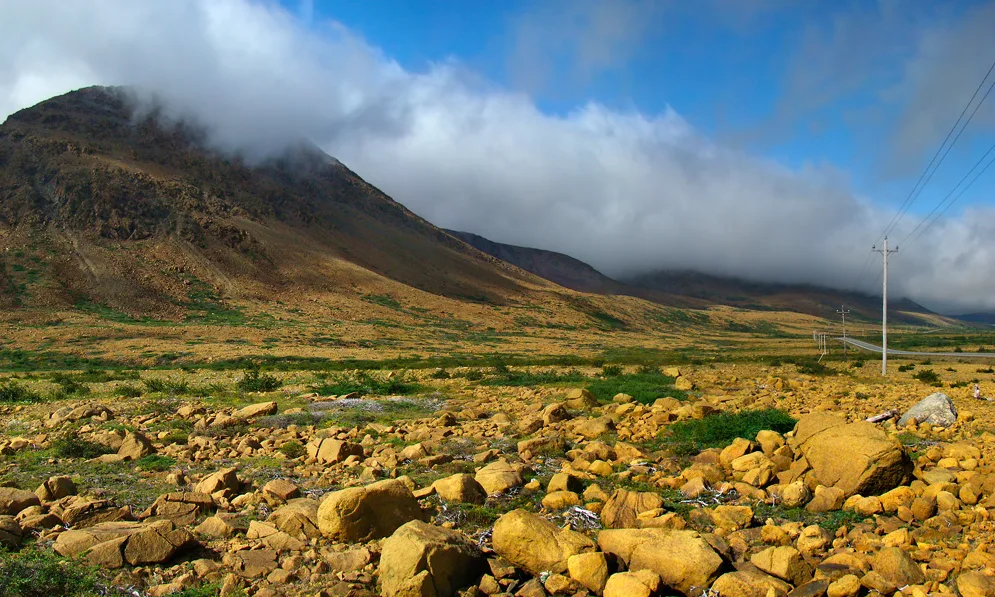
The Tablelands seen from Route 431 in Gros Morne National Park, Newfoundland. Credit: Tango7174/ Wikimedia Commons. (CC BY-SA 4.0)
The IUCN's assessment outlook for this site is “good with some concerns” because “the outstanding beauty of the coastline could be compromised by oil exploration in the future, if not effectively mitigated against through planning and management.”
Mistaken Point is found at the southeastern tip of Newfoundland and features 17 km of rugged coastal cliffs that contain fossils dating back 580-560 million years ago. The IUCN says that current threats to this site are very low because it is relatively isolated and frequently experiences intense winds. The IUCN says that the overall threats to this site are very low and its assessment outlook is “good” due to effective protection and management.
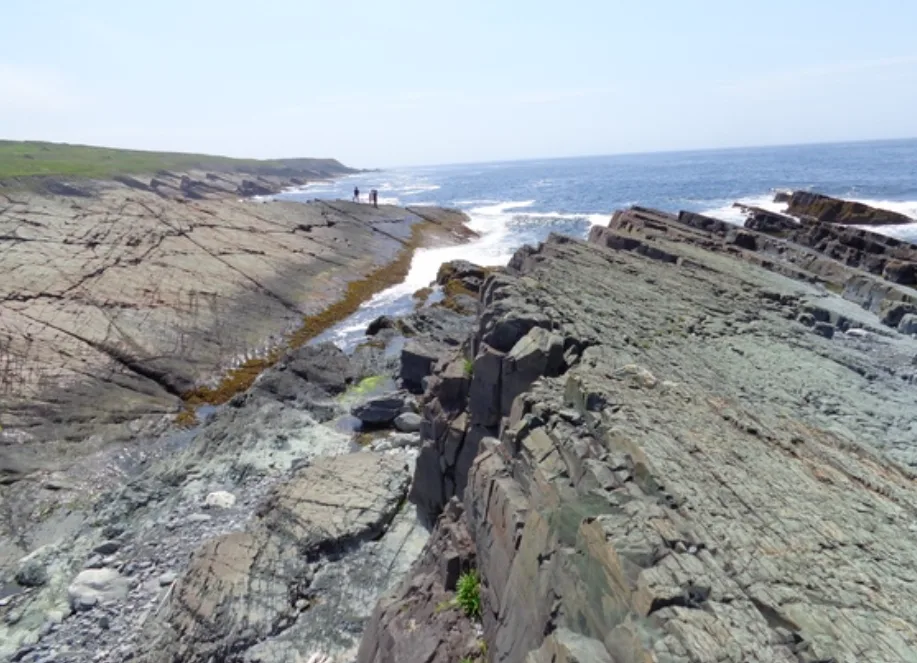
Mistaken Point, Newfoundland. Submitted by: Kristine Hibbs
Thumbnail credit: Olya Adamovich via Pixabay







